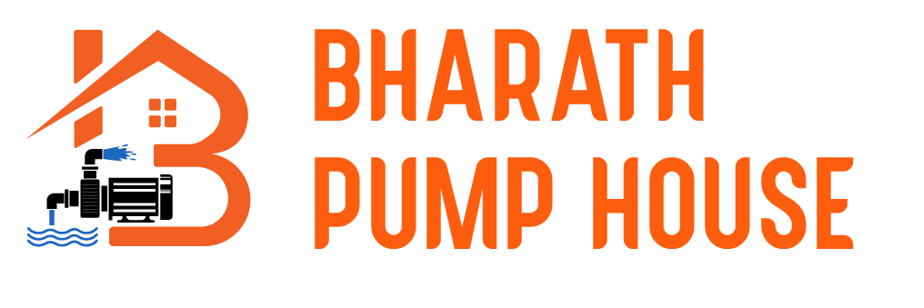Complete Pumping Solution for Your Needs
When it comes to fulfilling your pumping requirements, it is essential to have a reliable and efficient solution. At our company, we offer a comprehensive range of pumping solutions that cater to various industries and applications. With our expertise and partnerships with top brands, we can provide you with the perfect solution for your pumping needs.
How Does a Water Pump Work?
In households, majorly a centrifugal water pump is used. It operates on an electric motor to spin an impeller, a rotating part equipped with vanes or blades. As the impeller spins, it creates centrifugal force which pushes water outwards from the centre of the pump towards its edges. This action creates low pressure at the centre allowing water from the source (like a well or a reservoir) to flow into the pump. The spinning impeller then accelerates the water by increasing its speed and pressure. This pressurised water is then pushed through the pump’s outlet or discharge port. Then the water travels through pipes or hoses to reach its intended destination, whether it is the faucet, sprinkler, or other water outlets within the home.
Understanding Your Pumping Requirements
Before we recommend a pumping solution, we take the time to understand your specific requirements. Whether you need a pump for industrial, commercial, or residential use, our team of experts will assess your needs and provide you with the most suitable options.
Our wide range of pumping solutions includes:
1. Self-Prime Regenerative Pumps
A Regenerative Pump has vanes fitted on either side of the rim that rotate in a ring-like conduit in the pump’s casing. The fluid does not discharge from the tip of the impeller but is re-circulated back to the bottom of the impeller. This re-circulation or regeneration is how the pump re-primes itself.
These pumps are suitable for handling clear cold fresh water, free from abrasive particles and chemically aggressive substances. Suitable for domestic water supply, lawn sprinklers, gardens, etc. These pumps due to their self-priming capability can remove air and hence is suitable to suck water from pipelines and, therefore, does not require a foot valve.
2. Centrifugal Monoblock Pumps
Centrifugal Pumps serve the purpose of circulating water by the conversion of rotational kinetic energy to the hydrodynamic energy of water flow. The rotational energy is derived from an electric motor. The other kind of a centrifugal pump with a similar mechanism is the Jet Centrifugal pump which uses a stream of sucked water for creating a jet to improve the drawing capacity from the underground resources.
These pumps are suitable for handling clear cold fresh water, free from abrasive particles and chemically aggressive substances. Suitable for domestic water supply, lawn sprinklers, gardens, small farms, irrigation, agricultural applications, draining of wells and tanks, filling water in swimming pools, etc. These pumps have higher discharge compared to regenerative pumps. The pump has to be installed with a good quality ISI foot valve. Excellent hydraulic performance and higher operating efficiency compared to regenerative pumps with lower maintenance costs.
3. Submersible Pumps
A Submersible Pump is a device with a sealed motor which is completely submerged in water bodies, especially open wells and bore wells. They are an efficient and wiser choice since they do not require any priming as they are already submerged into water. They are further divided into two types:
These pumps are suitable for handling clear cold fresh water, free from abrasive particles and chemically aggressive substances. Tube well submersible pumps are suitable for 3″, 3.5″ & 4″ bore wells.
4. Bore Well Compressor Pumps
Bore Well Compressor Pumps are especially designed for drawing water from deep bore wells with specific diameters. Air pressure is used in this machine to lift the water from deep bores.
These pumps are best suited for comparatively less yield bore wells, having a depth of up to 600 ft. Compressor Pumps can be used in bore wells containing muddy water, where tube well pumps are not suitable. There are two types of compressor pumps, Monobloc and belt driven types. Discharge of the compressor pumps depends on the yield of the bore well.
5. Pressure Booster Pumps
A Pressure booster pump is a quality appliance, which you should go for if you want smooth and pressurized water supply in your home. They are especially engineered to supply you with required pressurized water according to your needs.
The automated pumping system is supplied with a pressure tank for constant water pressure across all openings connected to the piping system making it an ideal choice for use in residential buildings. As the water pressure drops to a set level, the pump automatically starts to pump water and as the consumption drops the pump stops automatically when the outlet pressure rises to pre-set stop pressure
6. Shallow Well Pumps
Shallow Well Pumps, are a very novel pick for shallow wells. The reason being that they have great suction power and are a good choice for rural areas.
Shallow Well Pumps having suction head of up to 8 meters and hence can be chosen as an alternative if suction head is greater than 7 meters which is the capacity for normal self-prime pumps.
7. Centrifugal Jet Pumps
These provide a steady and strong flow of water with the water coming from underground. Depending on the depth, you can get a centrifugal deep well jet or a shallow well jet pump. These pumps can lift water from > 25 Feet depth. Centrifugal jet pumps are also efficient and easy to install. They are often used in residential settings where water needs to be extracted from considerable depths. They are a dependable solution for homes in rural or remote areas reliant on well water.
8. Inline Circulation Pumps
These pumps are used to circulate hot or cold water within the household. They are generally installed with a water heater to deliver hot water to different parts of the house. Their compact design allows for easy installation directly into the piping system while offering quiet operation. They are favoured for their ability to enhance overall water system performance. They are an excellent choice if you want to improve comfort and convenience within your home.
9. Waste water pump
Waste water pumps are used in applications where there is a need to transport contaminated water comprising of organic, inorganic and mineral origins. Waste water pumps are submersible pumps. They are single phase pumps since the power requirements are low.
At our company, we believe in providing our customers with the best quality products. That is why we have partnered with top brands in the industry to offer you pumping solutions that are known for their reliability and performance.
Some of the top brands we work with include:
- V-GUARD: Known for their innovative designs
- CRI: With a reputation for durability and efficiency
- CROMPTON: Known for their extensive range of pumps
- EKKI/DECCAN: Key player among higher HP pump manufacturers
- KIRLOSKAR: Most famous brand in indian pump industry
- LUBI: Solutions for a wide range of industries and applications
- SHAKTI: Word class design in indian pump industry
- TAVO: Known for their budget friendly pumps
- TEXMO: Wide rage agricultural pump provider
By partnering with these top brands, we ensure that our customers receive pumping solutions that are built to last and perform optimally in their specific applications.






